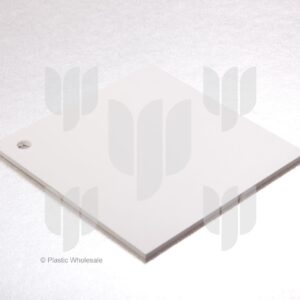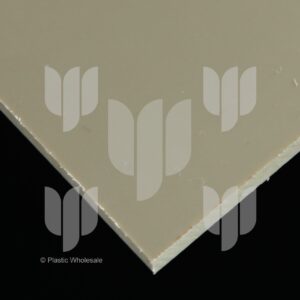About High Density Polyethylene (HDPE)
High Density Polyethylene (HDPE), also known as sandwich board, is a thermoplastic derived from petroleum hydrocarbons. It is the world’s most widely used plastic, with a production rate of around 80 million metric tons annually. Key characteristics include toughness, light weight, high wear resistance, good resistance to corrosion and chemicals, and easy machinability.
 Download datasheet (144Kb)
Download datasheet (144Kb)
History
1898 – Polyethylene is synthesised by accident by German chemist Hans von Pechmann while he is heating diazomethane
1935 – The first solid form of polyethylene is created by British chemists Eric Fawcett and Reginald Gibson by working with ethylene at high pressure
1953 – High density polyethylene (HDPE) is created at the Kaiser Wilhelm Institute by Karl Ziegler and Erhard Holzkamp
1955– The first HDPE pipe is produced
Applications
In addition to packaging and storage, HDPE is used for the following:
- Concreting: HDPE is used in concreting as a protection liner. The natural colour aids the cooling process for large projects by allowing the concrete to cool more slowly, forming a stronger finish.
- Sliding: A HDPE coating is used to help material slide across a surface more efficiently
- Wear Pads: HDPE is used to protect metal and other surfaces from friction damage, such as turntables on semi-trailers
- Construction: Uses in construction include roof window frames and wash basins
- Motor vehicles: HDPE is used in car trunk linings, motorbike mudflaps, seats and wheel arches
- Household: HDPE is most commonly known as cutting board material, and is used in homes to cut bread and other food items
- Fishing: HDPE is used by fishermen as bait board material
- Boating: HDPE is used to roll or slide boats on and off trailers, and as a packing panel behind the motor to save having to drill into the structure of the boat. HDPE panels are also used for their light weight as a finishing plastic on boats
Other uses of HDPE include shopping bags, pallets, piping, battery cells, drip trays, fans and etching baths.
Key Properties
General
Density relative to water (=1), 0.94
Water absorption (24 hrs), 0.03%
Thermal
Continuous Service Temperature, 75°C (167°F)
Melting point, 125°C (257°F)
Mechanical
Tensile Modulus of Elasticity, 800 N/mm2
Elongation at Break, 500%
Yield Stress, 22 N/mm2
Impact Strength, Notched Izod @ 23°C, 13 kJ/m2 (6.2 ft-lbs/in2)
![]() Download datasheet (144Kb)
Download datasheet (144Kb)






